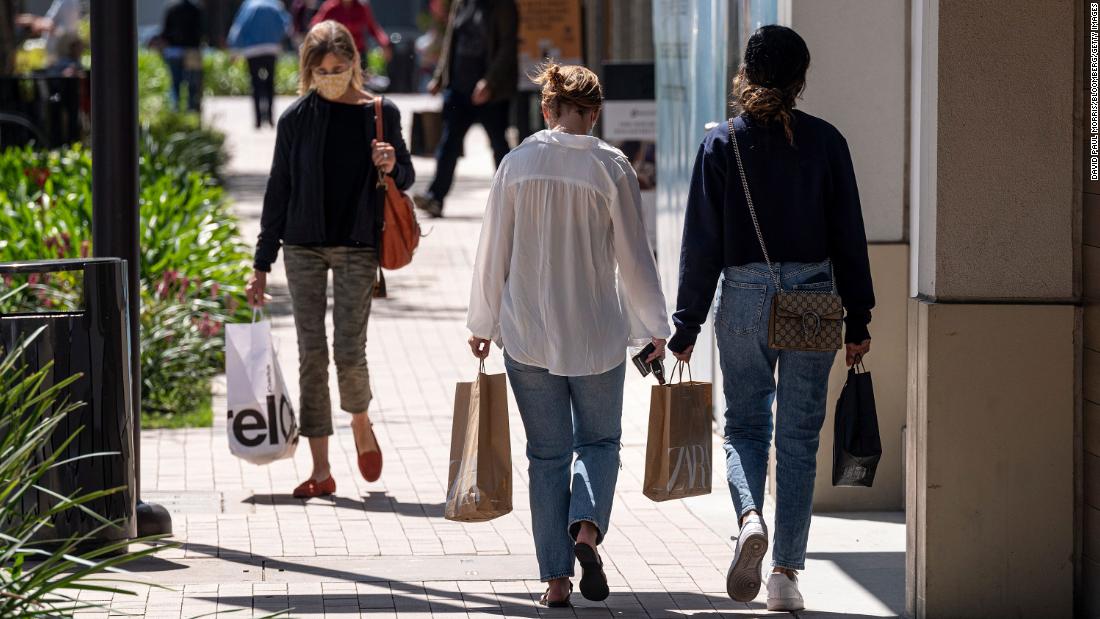Consumers around the world have accumulated $5.4 trillion in extra savings since the coronavirus pandemic began. Which sets the stage for a spending boom, which could fuel a sharp increase in economic growth this year.
Households had accumulated this extra savings, equivalent to 6% of global GDP, by the end of March, according to Moody’s Analytics.
In addition, that figure is higher than what they would have saved if the pandemic had not occurred and the behavior was the same as in 2019, said the firm’s chief economist, Mark Zandi, in a research note published Monday.
The United States has the largest share of extra savings, amounting to $ 2.6 trillion, or 12% of US GDP. The UK is close behind with 10% of its GDP.
In general, excess saving is higher in North America and Europe, where lockdowns and public aid have been higher, Zandi explained.
Many wealthy households, whose income has not been affected by the pandemic, have accumulated savings that they would otherwise have spent on travel, entertainment and meals away from home.
A second factor driving the extra savings was unprecedented government support for workers and businesses. The International Monetary Fund said in November that governments and central banks around the world had announced $ 19.5 trillion to cushion their economies from the worst recession since the Great Depression.
This stimulus has served to pay salaries and rescue companies in difficulty. Which, in turn, has enabled some people to save despite the economic slump.
As lockdowns ease, consumers are expected to spend about $ 2 trillion of this surplus cash. That would help the world economy make considerable profits.
“The combination of significant pent-up demand and overflowing savings will drive increased consumer spending around the world as countries move closer to herd immunity and open locks,” said Zandi.
“We expect about a third of the world’s extra savings to be spent this year, adding just over 2 percentage points to global GDP growth,” he added.
All that extra spending could also fuel inflation. Precisely, a growing concern among investors and economists, as it could force central banks to raise interest rates and reduce asset purchases ahead of schedule.
The US Producer Price Index, which measures the selling prices of goods and services, rose 1% in March, seasonally adjusted. This is a steeper increase than the previous month and higher than economists expected.
According to Zandi, consumers could spend more or less than expected, depending on how quickly the pandemic subsides. The results of a survey conducted earlier this month by the New York Federal Reserve revealed that households spend more of their government stimulus checks on saving or paying off debt, rather than spending.
At the same time, strong consumer confidence bodes well for spending. In the first three months of the year, global consumer confidence reached its highest point since records began in 2005, according to The Conference Board.
One factor limiting an even bigger spending boom is that high-income households have accumulated a large chunk of the extra savings, especially in the United States. They are more likely to treat it as “wealth than income, and thus they will spend much less, at least quickly,” Zandi explained.
In the United States, those over 55 have more than 60% of excess savings. Of those, homeowners have 90% and three-quarters are concentrated in households with at least a college degree.
“None of this is too surprising, but it is a reminder of how tough the pandemic has been on the finances of young, less-educated, low-income renters, and how easily homeowners have navigated financially. older and high-income, “added Zandi.

